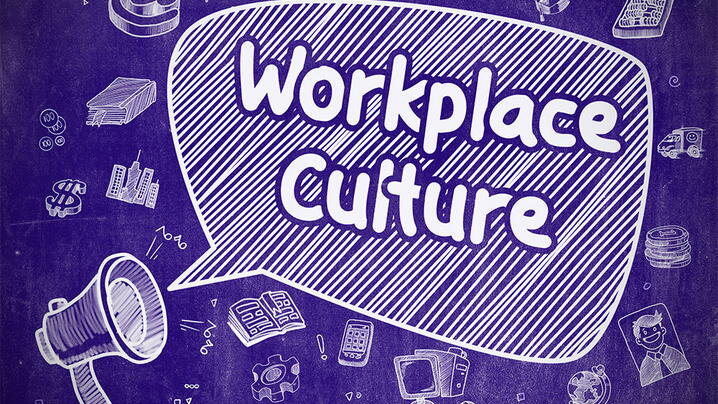
by Valorie Waldon, SPHR, SHRM-SCP, human resource consultant, Employers Council
This post is part one of a three-part blog series titled 'A Great Workplace Is Great for Your Local Government'.
The need to create a great workplace is critical in today’s world. But what is a great workplace? It’s an organization in which people want to invest their time, energy, and talents to support and contribute to the success of the organization. When we hear “great workplace,” things like employee perks, game rooms, and amazing benefit programs often come to mind. These things alone do not create a great workplace. Great workplaces are environments where employees are valued, challenged, and have a sense of fulfillment. These elements tend to foster employee engagement.
The Gallup organization says only 30 percent of American workers are actively engaged in their work. An engaged employee is one who feels good about the organization and wants to do his or her best work every day. Engaged employees are more productive, they are more interested in ensuring that your customers have a great experience, and they generate more profit than employees who are not actively engaged. Engagement is different from satisfaction. An employee may be completely satisfied with his or her work situation and still be unproductive.
A precise definition of engagement will vary from organization to organization, but three factors are critical to creating and maintaining a workplace where people want to be. Those factors center on the people, the communication, and the leadership within the organization.
It Is about Great People
We’ve all heard it said that the key differentiator between a good organization and a great organization is always the people. Whatever the current environment or culture of your organization, it is due in large part to the people who work there. Even if no one intentionally set out to have the culture you have today, the culture developed organically. Wherever you have a group of people together for a period of time, a culture will emerge. After all, culture is simply the “characteristic features of everyday existence shared by people in a place or time.”
Hire great people
To make sure you have a great culture, hire great people. Hiring is one of the most important things that you do. A bad hire can derail a good team, so it is important to have more than one person make the selection. Consider a collaborative/consensus-based approach to hiring. In addition to the hiring manager, involve people who are outside the workgroup, such as people that they will work with directly in another department, as well as people that have no direct relationship to the position at all, other than understanding the organization and its needs.
Have clear criteria for the position you seek to hire for and determine their priority. What is really important to your organization? Is it the ability to solve problems? Technical skill/ability? Are there behavioral characteristics that are important to your organization, like interpersonal skills, whether they are a nice person to work with, diversity of thought? Maybe a desire to grow and develop is important within your organization.
Ask different types of questions to get a clear picture of candidates, such as behavioral and hypothetical questions. Hypothetical, or situational, questions give you a good picture of their problem-solving skills and thought processes as they address the circumstance presented. Behavioral questions tell you how they will likely handle situations in the future based on how they have handled them in the past. Remember, the hiring process is your first opportunity to share with the candidate important information about your organization, the position itself, and the expectations of the organization and/or the hiring manager.
Managers often need support as they are on the front line of bringing great individuals into your organization. HR has a critical role to play in that regard. Some ways to support them, in addition to training on the legal requirements of personnel selection, might be to train managers to understand and establish hiring criteria and provide them with core questions for interviews based on clear job criteria and organizational culture. Conduct “shadow interviews” where someone sits in on their initial interviews and debriefs with them regarding what went well and what could be better. This goes a long way toward increasing their confidence and effectiveness. Provide specific training on documentation of the candidate’s interview responses and evaluate the candidate feedback/evaluations they produce.
Lay a solid foundation
As with Maslow’s Hierarchy of Needs, there is a hierarchy of employee engagement needs. At its base is a clear understanding of the position. This includes what is expected in terms of results and behaviors, as well as how the position contributes to the overarching goals of the organization. Next, employees want opportunities to develop, learn, and grow. While this may equate to promotional opportunities at times, more often it means they want to be challenged and stretched in their role. This requires quality coaching and ongoing feedback. Finally, employees want accountability that is aligned with authority. In other words, in those areas that managers want employees to be responsible for specific outcomes, employees need the flexibility and support to get things done.
Since accountability typically means fulfilling a commitment, managers need to work with employees to make certain that the expectations are well understood and achievable. It is critical to provide timely, frequent, fact-based feedback that is designed to help employees meet their commitments. It is important to make sure that employees are clear about the consequences, whether they meet the commitment or fail to meet it. This is not about threats, it’s about employees clearly understanding the impact that their success or failure will have on the organization. Appreciation, recognition, and reward are key components in this hierarchy. According to Gallup, when recognition and rewards are based on things that are meaningful to individual employees, they feel more significant and have a greater motivating influence than a one-size-fits-all approach. Their research also shows that recognition is most memorable for employees when it comes from their own manager or the CEO.
Physical work environment
The way that the workplace feels and looks not only contributes to the organization’s culture, it tells you a great deal about what it is like to work there. Think about the difference between an environment where each employee is in a private office and there are limited meeting spaces versus an open-air environment with multiple collaboration spaces located nearby. While neither is right or wrong, both contribute to and reflect the organization’s culture. One may be said to be more traditional and supporting of individual contribution and the other more collaborative and supporting of team contributions.
In addition to issues of office design, lighting, temperature, décor, and the ability to personalize the individual workspace are significant factors in employee comfort and productivity. Consider the impact of color and patterns in the workplace. The acoustics in the work area should be conducive to the type of work employees are doing. For complex knowledge work, there should be quiet areas that allow employees to focus. In what areas might employees be able to control their environment? These issues contribute to, or detract from, employee satisfaction, levels of engagement and the sense of well-being.
Employers that provide a comfortable, well-designed work space that allows employees to do their work well are investing in the creation of a great place to work.
In Part Two, we will discuss the impact that communication has on creating a great place to work.
Established in 1939, Employers Council provides professional services to over 4,000 employers, helping them develop and maintain effective, successful organizations.
About the author
 Valorie Waldon has been an HR consultant with Employers Council since 2007. In her role she consults with and advises members regarding the full spectrum of employee issues and trains on a variety of topics such as HR metrics and analytics, effective performance management, recruitment and selection, employee development and employee relations. Prior to coming to the council, Waldon had over 20 years of human resource management experience. In addition to owning and operating an HR firm, she has served as the top HR executive, providing strategic direction and advising executive leadership, for organizations in both the public and private sectors. Her passion has always been to help organizations fully engage their workforce by making the most of the skills, talents, and gifts that their employees bring to the table. She is a graduate of the University of Colorado at Boulder and holds SPHR and SHRM-SCP certifications.
Valorie Waldon has been an HR consultant with Employers Council since 2007. In her role she consults with and advises members regarding the full spectrum of employee issues and trains on a variety of topics such as HR metrics and analytics, effective performance management, recruitment and selection, employee development and employee relations. Prior to coming to the council, Waldon had over 20 years of human resource management experience. In addition to owning and operating an HR firm, she has served as the top HR executive, providing strategic direction and advising executive leadership, for organizations in both the public and private sectors. Her passion has always been to help organizations fully engage their workforce by making the most of the skills, talents, and gifts that their employees bring to the table. She is a graduate of the University of Colorado at Boulder and holds SPHR and SHRM-SCP certifications.
New, Reduced Membership Dues
A new, reduced dues rate is available for CAOs/ACAOs, along with additional discounts for those in smaller communities, has been implemented. Learn more and be sure to join or renew today!
